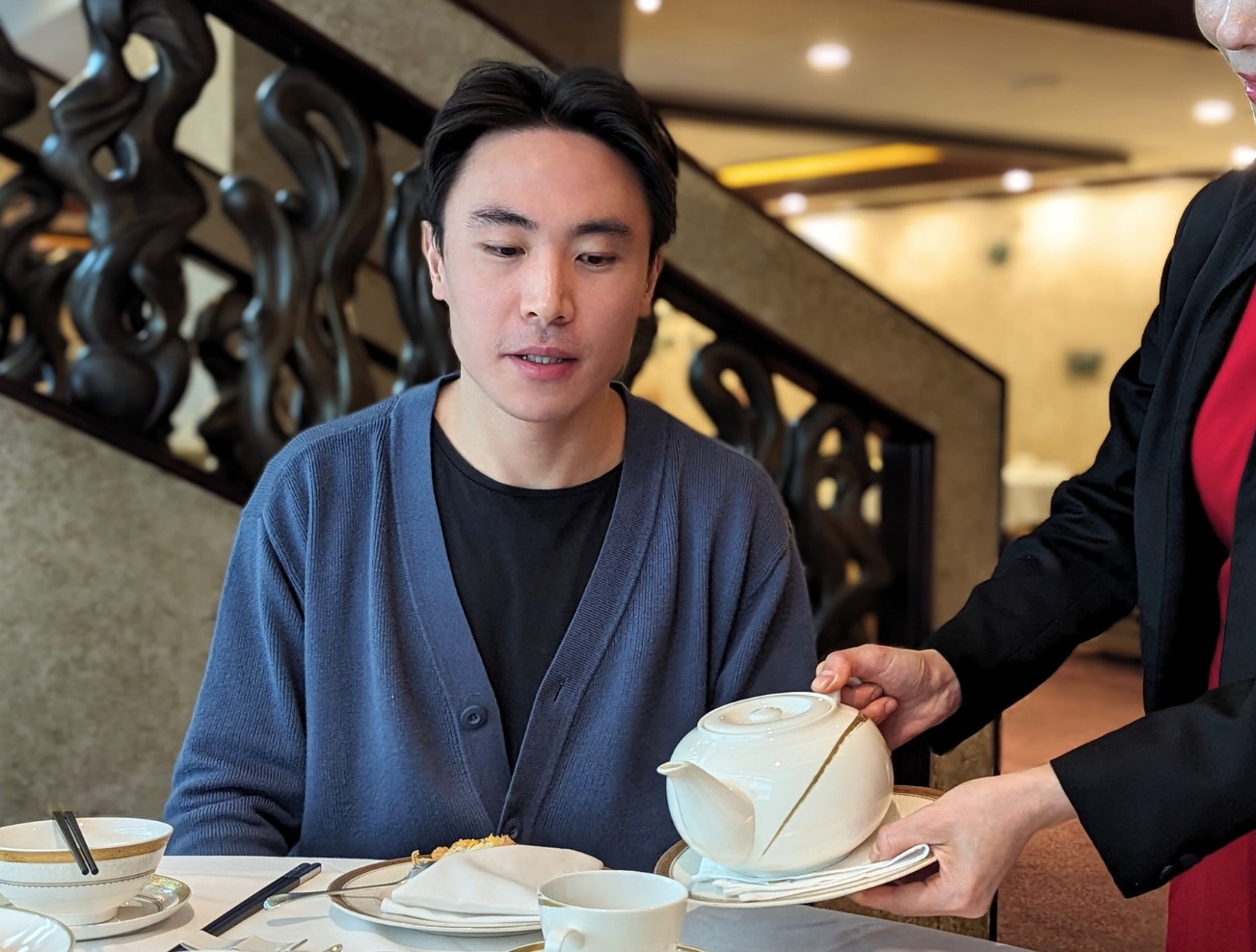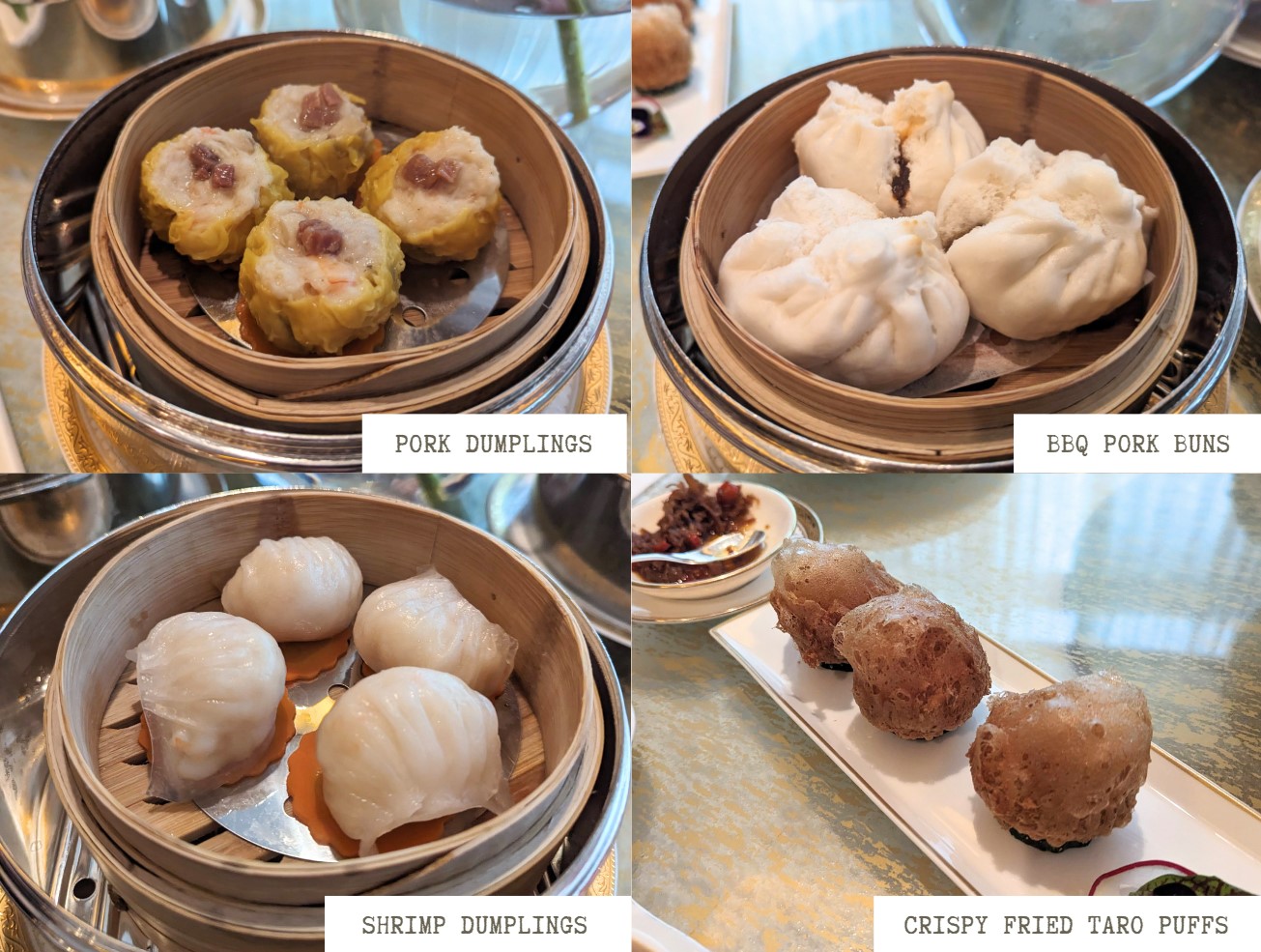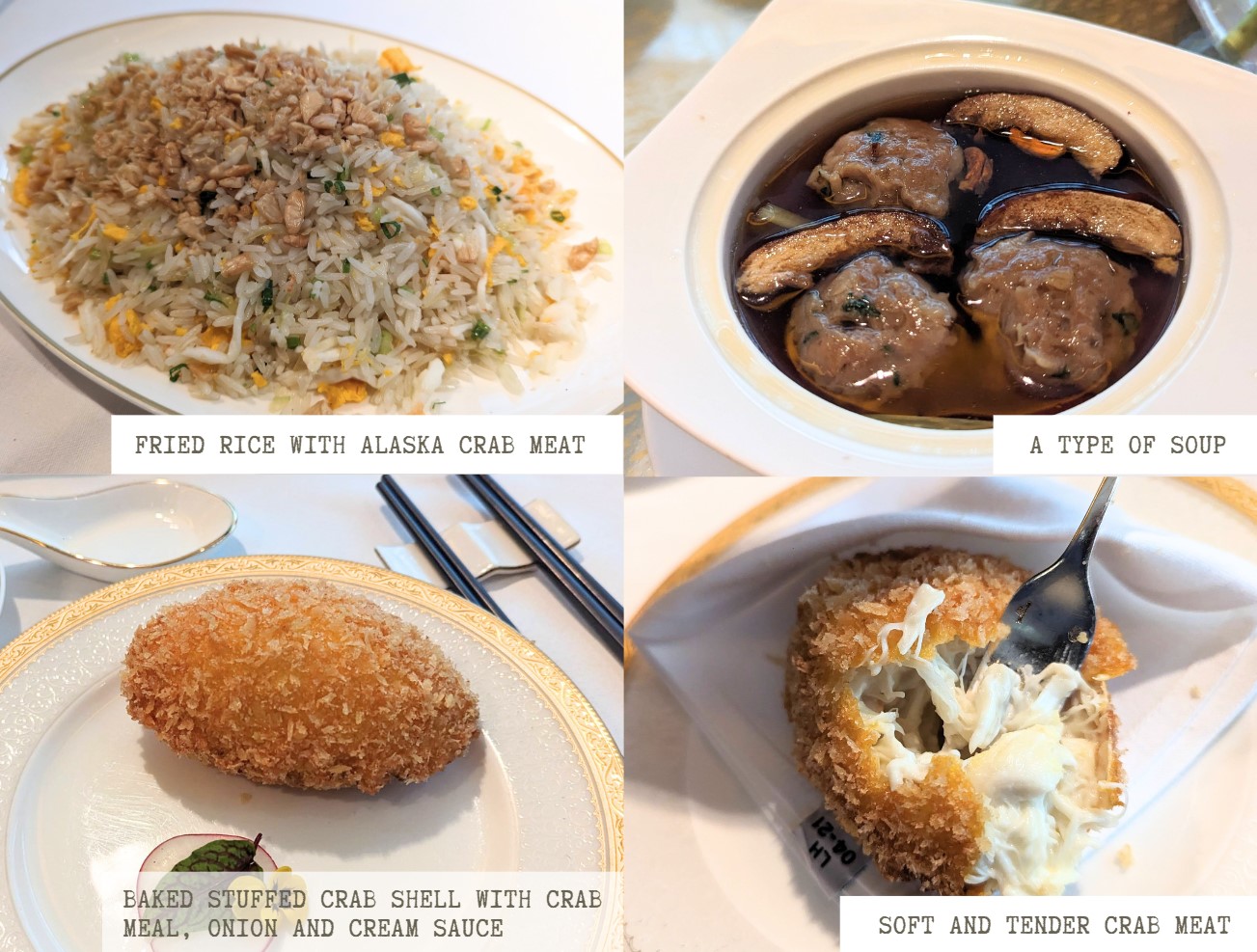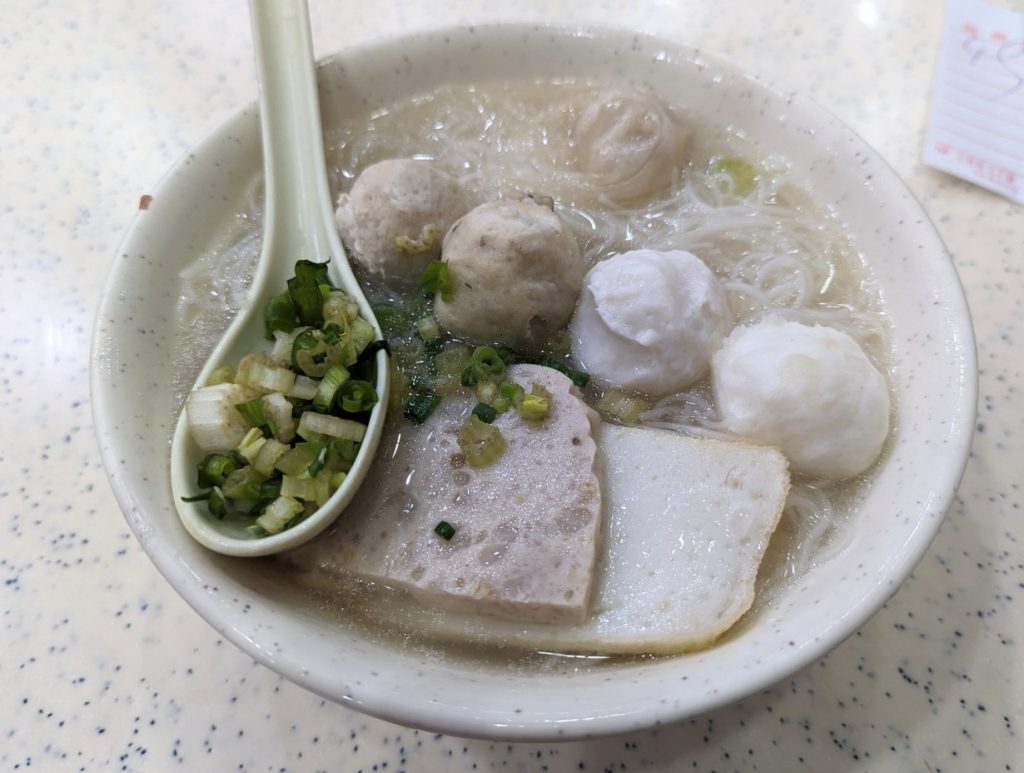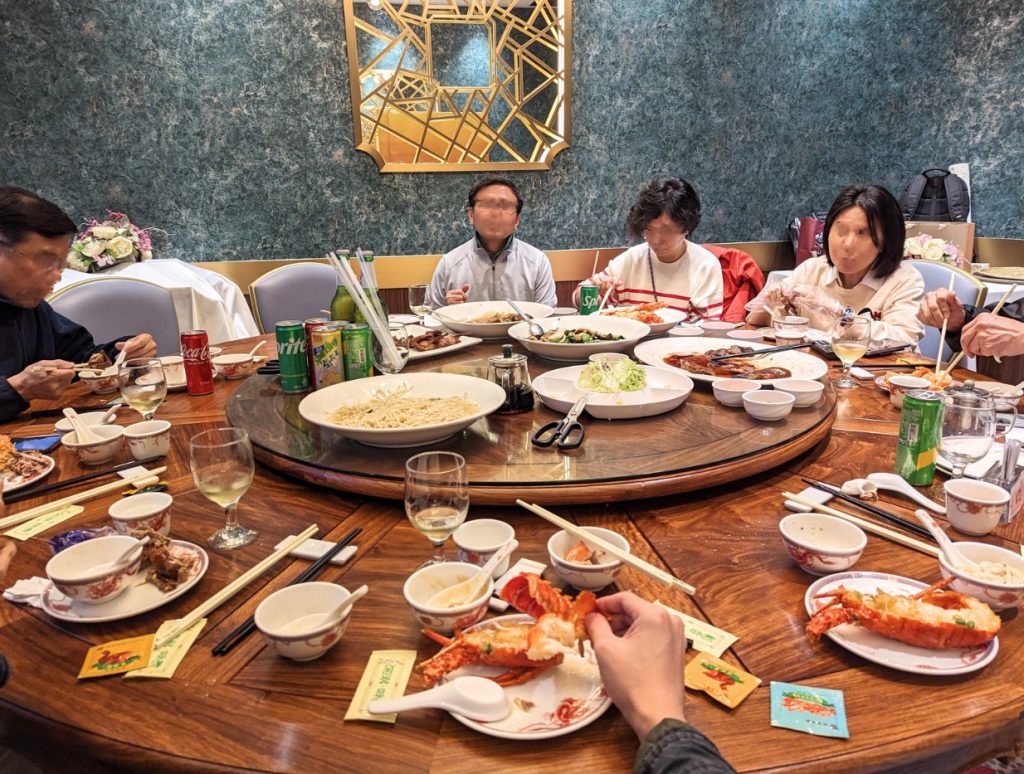
Coming to Hong Kong?
Dining and restaurant phrases for Cantonese practice
Lunch service at T’ang Court, a MICHELIN-starred restaurant at The Langham, Tsim Sha Tsui
One of my most memorable dining experiences in Hong Kong was in Tsim Sha Tsui, the famous district that overlooks glittering Victoria Harbour. I visited The Langham, a five-star luxury hotel, and enjoyed a scrumptious lunch at T’ang Court. This Cantonese restaurant was rated 3-stars by the MICHELIN guide in 2023.
In an interior that is majestic and elegant, the service was bespoke. I particularly enjoyed the kitchen’s creative take on classic ingredients, masterfully represented by the Baked Stuffed Crab Shell… , Fried Cod Fish with Honey Sauce, and Crispy Fried Intestine.
If you are looking for suggestions for places to eat in Hong Kong, feel free to message me on Instagram or e-mail me.

Garry Ho
Garry was born in Hong Kong but moved to Sydney, Australia at an early age.
Basic words to practise
Hong Kong is known for its fast-paced lifestyle. The city has 7.4 million people and is one of the most densely populated in the world. Everywhere you go, you will likely see high-rise buildings accomodating apartments, shops and restaurants.
Expect everyday restaurants to feel similarly fast-paced. For lunch, people will often go to a “Cha Caan Teng” (Hong Kong-style diner) to have a quick, tasty meal. You might be sharing a table, with a plastic board separating the space between you and the other person. The service is usually quite brisk, with a style that is more focussed on getting things done rather than providing hospitality.
If you’d like to watch and hear me pronounce these Cantonese phrases, visit this YouTube video.
- “Restaurant” = “Tsarn teng”
- “Breakfast” = “Zhou tsarn”
- “Lunch” = “Ng tsarn“
- “Dinner” = “Marn farn”
- “Thank you” = “Mm goi”
- “Hello” = “Nei Ho”
- “Menu” = “Tsarn Pai”
- “Drink” = “Yum bun”
Phrases before the restaurant
If you’re learning Cantonese for the first time, you may find it difficult in comparison to languages like Korean and English. One reason is because Cantonese has 9 tones! Not only that, if you pronounce a word with a different intonation, the meaning can change dramatically.
Fun (or grim) fact, you won’t see the number 4 on many elevators because if pronounced in one tone, it means the number. If pronounced in another tone, it means “to die”.
A good way to familiarise with the pronunciation of Cantonese is to watch channels from TVB, a major broadcasting company in Hong Kong. “TVB Jade” is the main channel for the native language, playing nationally-loved dramas like “Virtues of Harmony” and “Heart of Greed”.
- “How many of us are going to have dinner?” = “Ngo dei gei dor yun ho sik farn?”
- “I am hungry” = “Ngo ho toh ngo”
- “Where is the restaurant?” = “Tsarn teng hay bin doh ah?”
- “When are we having dinner?” = “Ngo dei gei dor dim sik farn ah?“
- “Excuse me, I would like to reserve a table” = “Mm goi, ngo serng deng toi”
- “Let this meal be my treat” = “Li yut tsarn bei ngo tseng”
Phrases at the restaurant
Most people in Hong Kong can speak basic English, but if you do want to practise your Cantonese it’s a good idea to start with simple phrases that won’t require another response from yourself.
Next time you want to use the bathroom in a restaurant, try asking “Sai sau garn hai bin doh ah”? The answer will likely be a courteous point in the direction of.
- “What recommendations do you have?” = “Nei yau mut yeh to gai ah?”
- “What desserts could you introduce?” = “Yao mut yeh teem bun gai siu”
- “Let’s start eating” = “Dai gar sik farn”
- “What do you want to drink?” = “Nei serng yum mut yeh?”
- “This tastes delicious” = “Yi gor ho ho sik ah”
- “Where is the bathroom?” = “Sai sau garn hay bin doh ah?”
- “Are you full?” = “Nei bao mei ah?”
- “Can I please have the bill?” = “Mm goi mai darn”
Popular food phrases
During my 3-week stay in Hong Kong, I found places to eat via Google. If you’re using it, remember to be specific with your search enquiry. Phrases like “Fish ball noodle soup” and “Hot pot near me” will normally yield a list of locations from which you can filter and decide on where to go. Pleasingly, I found that Google Maps works perfectly fine in Hong Kong, compared to South Korea where NAVER was more functional.
A company that seemed to be more popular than Google is OpenRice. This website and app is a dining guide where people authentically publish their thoughts on restaurants they’ve visited.
- “BBQ pork rice” = “Tsar siu farn”
- “Fish ball noodle soup” = “Yuu darn torng hor”
- “Egg tart” = “Darn tart”
- “Beef brisket noodle soup” = “Ngau larm torng meen”
- “Claypot rice” = “Boh zai farn”
- “Pineapple bun” = “Bor lor bao”
- “Wonton noodle soup” = “Wun tun meen”
- “HK-style French toast” = “Sai dor sii”
- “Roast pigeon” = “Siu yuu garp”
- “Red bean blended ice” = “Hung dao bing”
Discover more


Visiting Nijo Market, Hokkaido University and Sapporo Factory
January 14, 2024

5 facts about life in Singapore with Nicky Sujadi
May 12, 2021

Local Restaurants to visit in Ho Chi Minh City
April 25, 2024

5 Facts about Life in South Korea
June 28, 2021

Restaurants to visit in Koreatown Los Angeles
March 26, 2023

It takes just a minute 🙏
My name is Garry Ho, I’m the founder.
If you have enjoyed our content and found it helpful, please consider supporting us.
All major cards are accepted.

